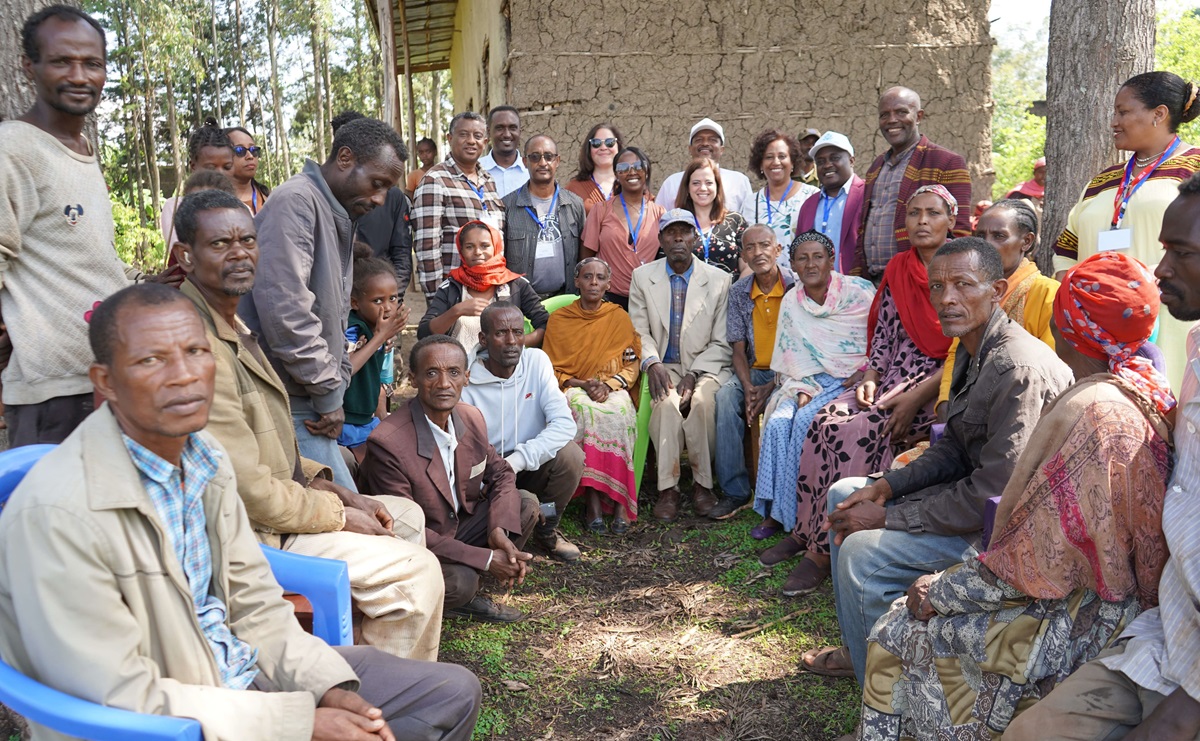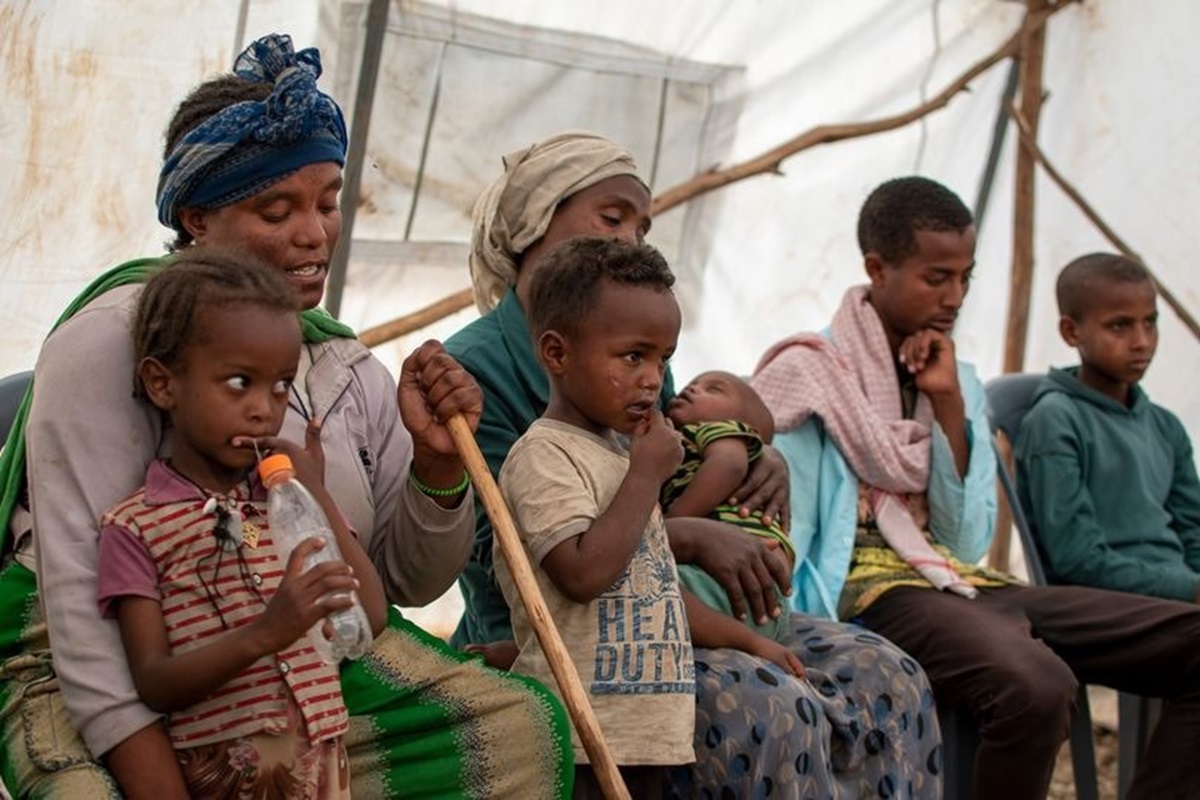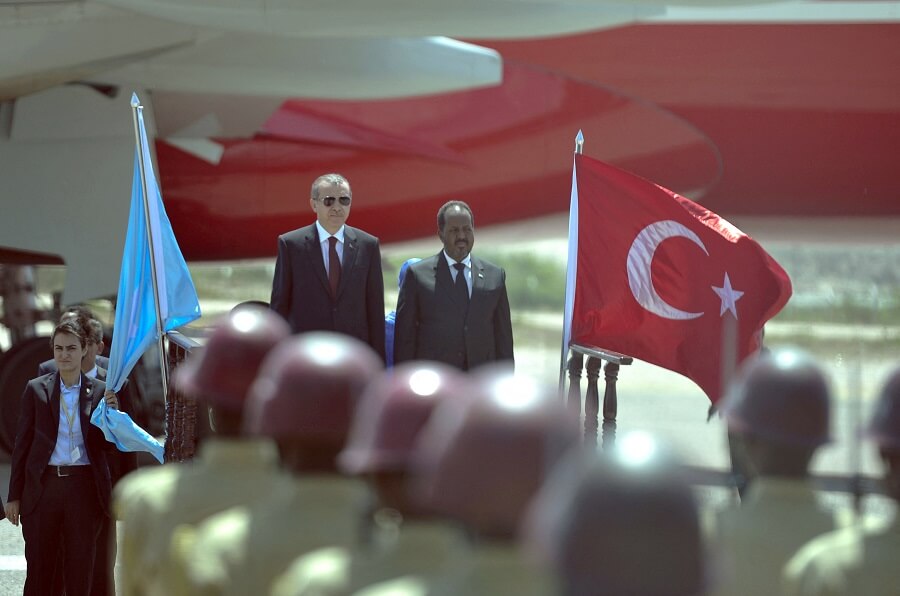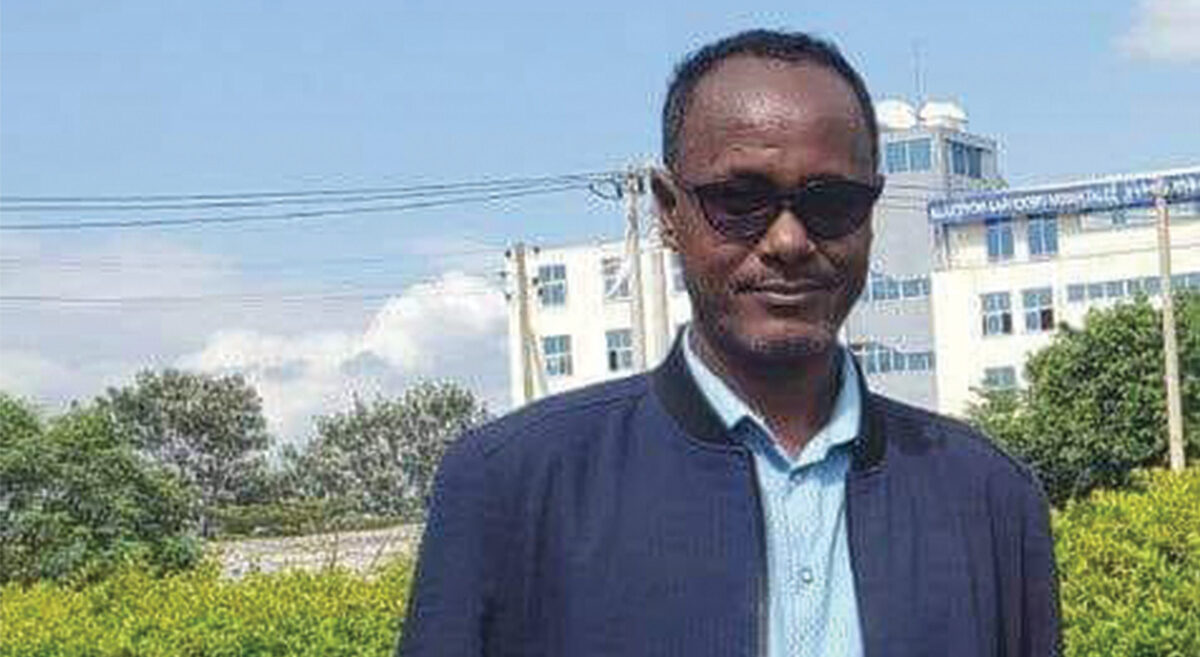Echoes of Tigray: Stories of Tigrayan children struggling for survival on the streets of Addis
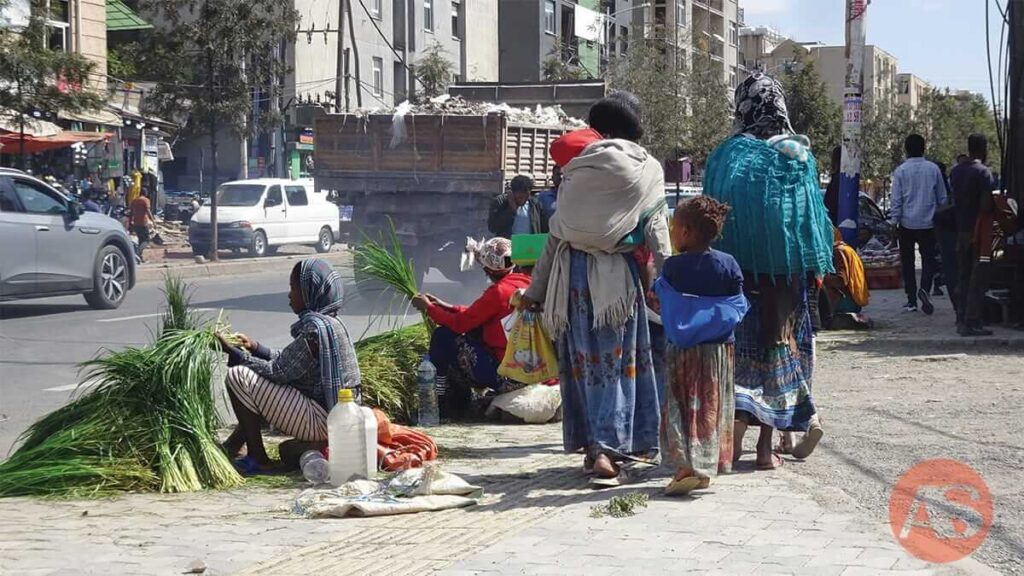
By Mihret G/kristos @MercyG_kirstos &
Zelalem Takele @ZelalemTakelee
Addis Abeba – In the vibrant heart of Ethiopia’s capital, Addis Abeba, where the pulse of daily life beats steadily, a stark reality unfolds amid the bustling streets. Amidst the throngs of pedestrians and busy vendors, a growing presence of children emerges, their stories echoing the harrowing journey from the northern Tigray region, marked by displacement and resilience.
The Tigray war ended in November 2022, subjecting the region’s civilian population to egregious atrocities encompassing acts of violence, starvation, and widespread loss of livelihood. Even a year after the conclusion of the two-year war, humanitarian conditions persist in Tigray, aggravated by suspension of aid due to massive aid diversion until last month.
Consequently, numerous families from Tigray have sought refuge and assistance outside their homes, dispersing across various regions within the country. For many children, the streets of Addis have not merely become a sanctuary but a fundamental means of ensuring their survival.
Wegen Desta, a nine-year-old, is among the Tigrayan children who currently reside on the streets of Addis Abeba. He and his family evacuated their village of Dengalat, in the eastern zone of Tigray, when hostilities broke out between the federal government and Tigrayan forces in November 2020.
“We left because we were afraid of the violence.” Wegen recounts their departure with a somber undertone.
Overall, more than 2.5 million individuals were displaced during the two-year war, as reported by the United Nations. The precise death toll remains uncertain. While the majority sought refuge in various internally displaced persons (IDPs) centers across the region, a limited number opted to migrate to urban areas, such as Addis Ababa.
There was initial optimism among the displaced population that, following the loss of relatives, friends, and property, comprehensive rehabilitation efforts could commence in Ethiopia’s northernmost region. However, one year later, many individuals are disheartened by the ongoing inability to return to their homes in Tigray. According to the UN, over 1 million IDPs still remain in camps internally displaced.
Subsequent to their escape, Wegen and his family initially sought refuge in Mekelle, the capital of the Tigray region. However, faced with a deterioration in humanitarian aid, they, like many others, migrated to Addis Abeba in pursuit of sustenance and income.
Wegen currently spends his days traversing distances of up to 10 kilometers from the shanty house he shares with his mother and siblings to downtown areas. Engaging in the vending of small items such as napkins, he frequently labors from early morning until late at night.
Despite harboring a keen desire to pursue his education, Wegen states that his family confronts financial constraints, hindering their ability to afford books, uniforms, and fees. Additionally, the upheaval experienced due to displacement has adversely impacted his educational continuity.
“I am keen to pursue education, but my current circumstances make it impossible,” he told Addis Standard.
Wegen’s friend, seven-year-old Bri Yisfaw, shares a similar background. His family fled southern Tigray after the war when their farm became unproductive due to poor rains. Bri’s parents now try to sell goods on the streets while he sells napkins with Wegen to contribute.
We find ourselves compelled to work in this manner to ensure our families’ survival.”
Bri Yisfaw, a seven-year-old child who fled from southern Tigray with his family
Last month, Addis Standard reported that the ongoing drought has impacted 20% of Tigray’s farmland, spanning 27 districts in the region, rendering it unproductive and posing a significant risk to the majority of the population.
Regional authorities have revealed that approximately 132,000 hectares of farmland, located in the south, southeast, and eastern zones of Tigray, have been adversely affected by the drought. The severe drought has led to the loss of 190 lives in two districts: Abergelle Yechila in the Central Tigray Zone and Atsbi in the Eastern Zone of Tigray.
The severe consequences of the drought are exacerbated by the fact that Tigray’s agricultural system has already suffered extensive damage and disruption due to two years of conflict, looting, and destruction.
Similar to his friend Wegen, Bri rises before dawn to undertake a solitary journey from his residence on the city outskirts to the bustling Bole Medhanealem area. In this locale, he devotes hours to earnestly approaching pedestrians, occasionally reaching out for hands and grasping legs as he seeks spare change to help support his impoverished family.
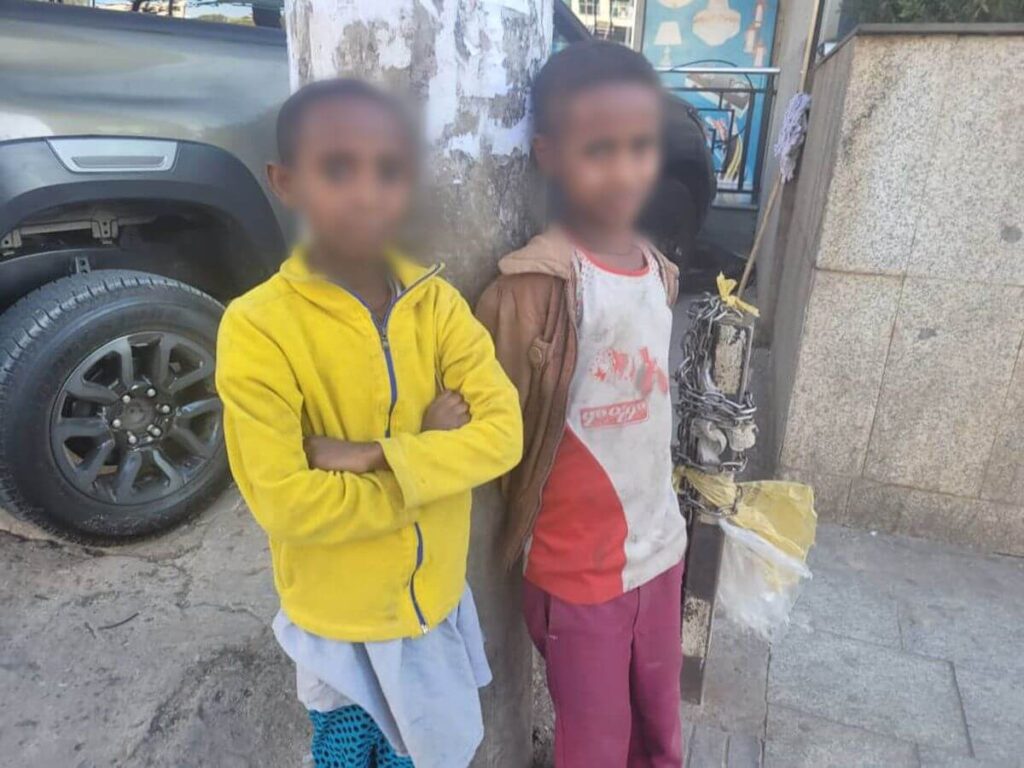
Bri aspires to pursue further education but lacks the means, as his family has lost their means of living in their homeland of Tigray. “We find ourselves compelled to work in this manner to ensure our families’ survival,” Bri expresses, displaying a surprisingly resigned tone for a child of his age.
The motivations for rural-to-urban migration are multifaceted. Nevertheless, various research underscores that conflict and poverty are significant factors contributing to the alarming increase in rural-urban migration in Ethiopia.
In Ethiopia, the escalating trend of internal rural-to-urban migration has become increasingly prominent. According to a study published in January 2022, rural-to-urban migration, defined as the movement from rural to urban areas, has demonstrated a notable increase, especially in the past decade. A recent survey conducted estimates the rate of rural-to-urban migration at 29%.
Bisrat Gebru and Tihagas Sibhatu are among the resilient young girls compelled to vacate their residences as a consequence of the conflict in Tigray. Originally hailing from Gijet Town in southern Tigray, both were actively engaged in pursuing their education when violence disrupted their lives in late 2020.
In the period preceding the Pretoria peace agreement, Bisrat recollects an assault on their village, prompting her and 13-year-old Tihagas to evacuate with their families for safety. Initially journeying north to Mekelle and encountering an absence of stability, they proceeded to the capital city of Addis Ababa, situated nearly 1,000 kilometers away.
The journey proved to be extended and strenuous, exacting both a physical and emotional toll on the two companions. Upon arriving in Addis Abeba, they encountered challenges in acclimating to their new surroundings while concurrently grappling with the psychological aftermath of the traumas they had witnessed.
According to the study titled “Rural-urban Youth Migration and Informal Self-Employment in Ethiopia,” migrant children and youth encounter numerous challenges in urban environments. Notably, tenure insecurity, encompassing uncertainties in rental arrangements for both residential units and workplaces, emerges as a significant issue. The majority of children and youth migrants also face vulnerability and food insecurity due to the absence of a social network capable of providing an informal safety net during crises.
Our village endured extensive brutality, leaving us with no alternative but to seek refuge.”
Bisrat Gebru, a 13-year-old girl who came with her family from Gijet Town in southern Tigray
The study further indicates a gender disparity, with young women experiencing greater disadvantages compared to their male counterparts. This discrepancy is evident in both their lower earnings in formal employment, as reported by tracked youth, and in the domain of informal self-employment.
Bisrat, who had been in the 4th grade, was compelled to discontinue her studies due to COVID-19 lockdowns and has, regrettably, been unable to resume her education since.
One distressing memory that indelibly lingers in Bisrat’s recollections involves the tragic killing of an entire family in their village by an armed group, accusing them of supporting the TPLF.
“Following that incident, we lived in a state of fear, leaving us with no alternative but to flee for our lives,” she recounts with solemnity.
Bisrat adds that Gijet was invaded by Eritrean forces, resulting in the destruction of homes and acts of violence against civilians. “Our village endured extensive brutality, leaving us with no alternative but to seek refuge,” she states.
Despite enduring considerable adversity, Bisrat and Tihagas have provided mutual support through resilience and friendship. Currently, they engage in joint vending activities on the city streets to contribute to their families’ sustenance.
Yet, Bisrat still maintains her aspiration to recommence her education, expressing, “One day, I aspire to learn like other children.” AS


